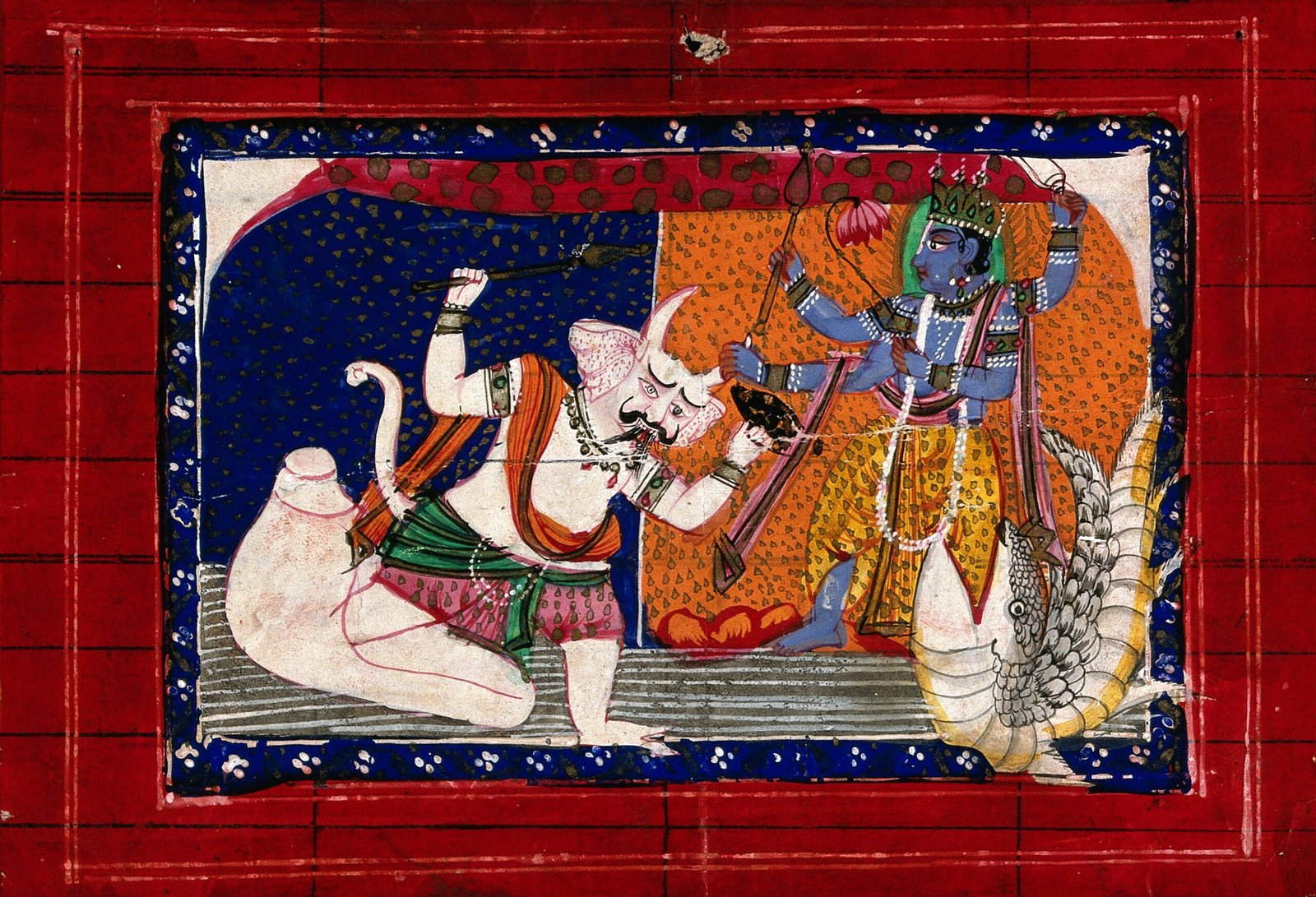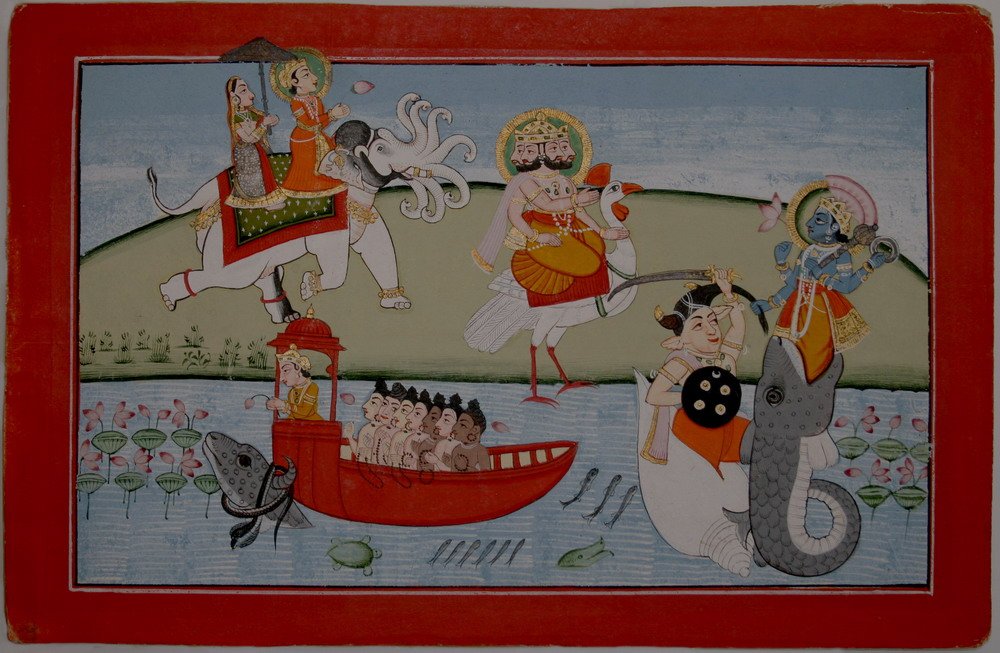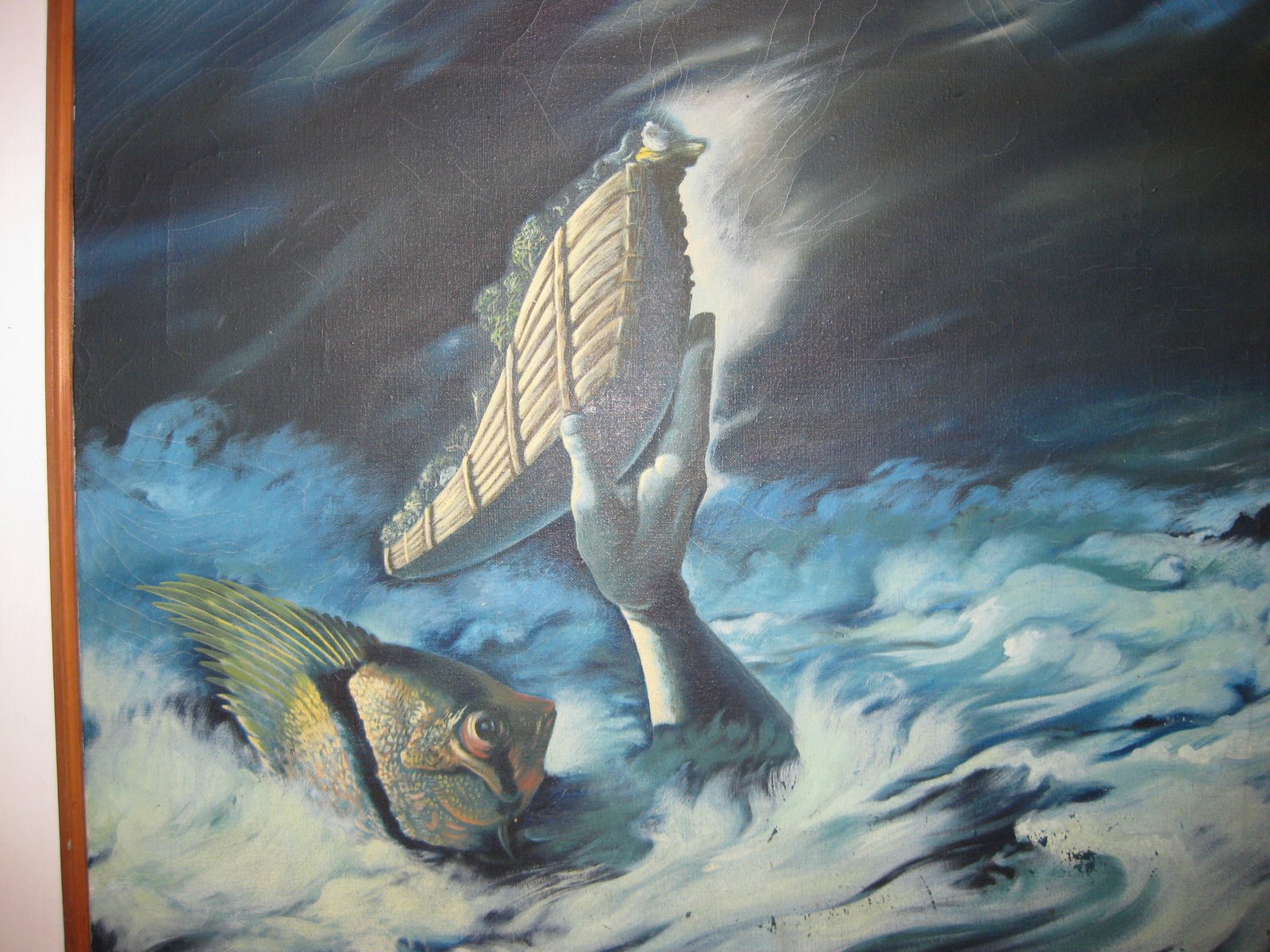Imagine waking up one morning to find the world on the edge of destruction, with nothing but torrential waters swallowing everything in sight. Now picture a small, shimmering fish promising salvation—and a new beginning. This is the heart-thumping legend of Matsya and Manu, a story from India’s deep past that has rippled through generations, captivating not just believers but also scientists and nature enthusiasts alike. At its core, this myth is more than just a bedtime story; it’s a tale of resilience, trust, and the awe-inspiring power of nature. It’s a story that asks us: What would you do if you were the last hope for humanity?
The Origins of the Matsya and Manu Legend
The Matsya and Manu tale is among the oldest myths in Indian tradition, tracing its roots back to the ancient Sanskrit texts known as the Vedas. These texts, believed to have been composed over 3,500 years ago, are the foundation of Hindu philosophy and cosmology. The legend first appears in the Shatapatha Brahmana and is later recounted in the Mahabharata and various Puranas, each version adding its own colors and interpretations. This enduring myth has become an essential part of Indian cultural identity, with its themes of survival and renewal echoing through the ages. While some stories fade with time, Matsya and Manu’s saga has grown only richer, often being retold at festivals and family gatherings. The enduring popularity of this myth is a testament to its universal appeal and timeless relevance.
Who Was Manu?
Manu is often hailed as the first man, the progenitor of humanity in Indian mythology. In many ways, he occupies a place similar to that of Noah in Judeo-Christian traditions or Utnapishtim in Mesopotamian legend. Manu is depicted as a wise, pious king—someone deeply attuned to the rhythms of nature and the wisdom of the gods. His character is defined by integrity, humility, and a willingness to listen, even when the messenger comes in the humble guise of a fish. Over centuries, Manu has become a symbol of human potential, resilience, and the unbreakable bond between people and the natural world. His name lives on in the term “Manav,” meaning human, and in the ancient code of laws known as Manusmriti.
The Mysterious Appearance of Matsya

The story takes a magical turn when Manu is performing his daily ablutions in a river, and a tiny fish swims into his cupped hands. This fish, called Matsya, pleads for protection from the larger creatures lurking in the water. Moved by compassion, Manu places the fish in a jar, only to witness it growing at an astonishing rate. Before long, the fish outgrows every vessel Manu can provide, signaling that it is no ordinary creature. This mysterious visitor is eventually revealed to be an avatar of Vishnu, the preserver god, who has come to warn Manu of a cataclysmic flood. The arrival of Matsya is both a miracle and a test, challenging Manu to recognize the extraordinary within the ordinary.
The Promise of Salvation
Matsya, in its divine form, tells Manu about the impending deluge that will wash away all life on earth. The fish instructs Manu to build a massive boat and gather the seeds of all plants, the seven sages (Saptarishi), and representatives of every animal species. The instructions are precise and urgent, underscoring the seriousness of the coming disaster. This moment is charged with emotion—a blend of fear, hope, and determination. Manu’s willingness to trust Matsya and prepare for the unknown is a powerful metaphor for faith in the face of uncertainty. The promise of salvation offered by Matsya is not just for Manu but for all living things, making this an early narrative about ecological preservation and interdependence.
The Great Flood Unleashed
As predicted, the skies open up and the earth is engulfed by a monstrous flood. Torrents of water pour from the heavens and rise from the depths, erasing the boundaries between land and sea. The chaos is described in vivid, almost cinematic detail in ancient texts, with lightning crackling and thunder roaring as the world drowns. Manu’s boat, built with urgency and hope, becomes a fragile sanctuary amid the endless deluge. The image of the tiny vessel braving the stormy sea resonates across cultures and epochs, symbolizing the human drive to survive against impossible odds. The flood, while destructive, is also cleansing, paving the way for a new beginning.
Matsya as the Guiding Force
During the flood, Matsya transforms into a gigantic, horned fish and instructs Manu to tie the boat to its horn using the sacred serpent Vasuki as a rope. Matsya guides the boat through the swirling chaos, ensuring its safety until the waters recede. This act of guidance is rich with meaning: Matsya is not just a savior but a navigator, leading Manu through confusion and despair toward hope and renewal. The bond between Matsya and Manu is built on trust, cooperation, and a mutual respect that transcends species and status. This partnership is a reminder of the importance of guidance and mentorship, especially in times of crisis.
The Ark and Its Passengers
Manu’s boat carries an incredible cargo: the seeds of all plants, pairs of every animal, and the revered Saptarishi, or seven sages, who embody wisdom and spiritual knowledge. This assembly is a microcosm of the world, a living archive of biodiversity and culture. The inclusion of both plants and animals highlights the ancient understanding of ecological balance and the interconnectedness of life. The presence of the sages adds a spiritual dimension, suggesting that survival is not just a matter of biology but also of wisdom and morality. The ark, in this sense, is more than a vessel—it is a symbol of preservation, diversity, and hope.
Parallels with Other Flood Myths
The Matsya and Manu legend is strikingly similar to other flood myths from around the world, such as the story of Noah’s Ark in the Bible and the Epic of Gilgamesh from Mesopotamia. In all these tales, a chosen individual receives a divine warning and saves life on earth from total destruction. This universality suggests that ancient peoples, separated by thousands of miles, grappled with similar fears and hopes about nature’s power and humanity’s place within it. The recurrence of the flood motif may reflect memories of real, catastrophic events such as ice age floods or river overflows. These shared stories remind us that, at our core, we are all connected by the struggle to survive and the dream of starting anew.
The Science Behind Flood Myths
Modern scientists and archaeologists have long been fascinated by the persistence of flood myths, not just in India but worldwide. Some suggest that these stories may be echoes of ancient climate events—massive floods triggered by glacial melts or shifting river courses. For example, the sudden flooding of the Saraswati or Indus rivers could have left a powerful impression on early Indian civilizations, inspiring legends like that of Matsya and Manu. Geological studies show that catastrophic floods have indeed shaped landscapes and societies, lending credence to the idea that myth and memory are entwined. By examining these stories through a scientific lens, we gain insight into how humans interpret and adapt to environmental change.
Symbolism and Deeper Meanings
The Matsya and Manu tale is rich in symbolism, weaving together themes of destruction and rebirth, chaos and order. Matsya, as the fish, represents adaptability and the capacity to survive in turbulent waters. Manu embodies human resilience, wisdom, and the willingness to heed warnings, even from unlikely sources. The flood itself is a metaphor for life’s unpredictability—its power to both devastate and cleanse, to end old cycles and make way for new ones. This myth invites us to reflect on our relationship with nature and our responsibility to protect and preserve the world for future generations.
The Role of Vishnu in the Legend

Vishnu, one of Hinduism’s principal deities, is known as the preserver and protector of the universe. In the Matsya avatar, Vishnu intervenes directly to save not just Manu but all life. This divine intervention reflects the Hindu belief in cosmic cycles and the periodic renewal of creation. Vishnu’s appearance as a humble fish is a reminder that the divine can take any form, often appearing in unexpected ways to those who are open and compassionate. The Matsya avatar is the first of Vishnu’s ten major incarnations, each representing a different stage in the evolution of life and consciousness.
Ecological Lessons from the Myth
The Matsya and Manu story is more than just a tale of survival—it’s an ancient lesson in ecological stewardship. By gathering seeds and animal pairs, Manu ensures the continuity of biodiversity and the health of the planet. The myth underscores the importance of balance, respect for nature, and the interconnectedness of all living things. In today’s era of climate change and environmental crisis, these lessons are more relevant than ever. The story invites us to take proactive steps to protect our world, to heed warnings, and to value every species, no matter how small or seemingly insignificant.
Cultural Impact and Artistic Expressions

The legend of Matsya and Manu has inspired countless works of art, literature, and performance across India and beyond. From ancient temple carvings to contemporary paintings, the imagery of Matsya guiding Manu’s boat has captured the imagination of artists for millennia. The story is dramatized in classical dance and theater, where performers embody the emotions of hope and fear, loss and renewal. Festivals and rituals continue to honor the tale, weaving it into the fabric of daily life. This cultural resonance shows how myths can shape identity, values, and collective memory.
Modern Interpretations and Adaptations

Today, the Matsya and Manu legend is reimagined in books, films, and discussions about environmental ethics. Some see it as an allegory for climate disaster preparedness, while others interpret it as a call for compassion and unity in the face of global challenges. Modern storytellers use the myth to spark conversations about sustainability, resilience, and the importance of listening to nature’s warnings. In classrooms and community gatherings, the tale is used to teach children about the fragility and beauty of the natural world. These new interpretations keep the story alive and relevant in a rapidly changing world.
Matsya in Indian Art and Iconography
Depictions of Matsya, the divine fish, are found in temples and shrines across India. Artists often portray Matsya with a human torso and a fish’s tail, holding sacred objects like the conch and discus. These images are not just decorative—they carry deep spiritual meaning, symbolizing protection, transformation, and the blending of earthly and divine qualities. The artistry surrounding Matsya reflects the reverence with which the myth is held and its enduring significance in Indian spirituality. Even today, Matsya remains a popular motif in jewelry, textiles, and home decorations, a subtle reminder of hope in turbulent times.
The Enduring Legacy of Manu
Manu’s name and story continue to influence Indian society in profound ways. The Manusmriti, or Laws of Manu, though controversial in modern times, shaped early legal and social systems. The idea of Manu as the ancestor of all humans has given rise to the term “Manav,” signifying humanity itself. In literature, philosophy, and daily conversation, references to Manu evoke the virtues of wisdom, courage, and foresight. His legacy is a reminder that individuals, even in the face of overwhelming odds, can make a difference for generations to come.
Scientific Curiosity and Ongoing Research
Researchers in fields as diverse as geology, archaeology, and anthropology continue to study the Matsya and Manu legend, searching for clues about its origins and significance. Some investigate ancient river patterns and sediment layers for evidence of great floods, while others analyze how such stories shape human psychology and cultural evolution. The interplay between myth and science sparks lively debates and inspires new discoveries. This ongoing curiosity ensures that the tale remains fresh and intriguing, inviting each generation to ask new questions and seek deeper understanding.
Myths, Memory, and the Power of Storytelling
The Matsya and Manu story is a powerful example of how myths serve as vessels for collective memory, encoding lessons, fears, and hopes that resonate across time. Stories like these help societies make sense of natural disasters, instill values, and inspire resilience. They bridge the gap between science and spirituality, fact and faith, offering comfort and guidance in uncertain times. The power of storytelling is evident in the way this ancient myth continues to shape beliefs, spark imagination, and encourage dialogue about humanity’s place in the world.
Personal Reflections on Matsya and Manu

For many, the legend of Matsya and Manu is more than an old tale—it’s a source of inspiration and comfort. As a child, I remember being gripped by the image of a tiny fish growing into a mighty savior, and the notion that even the smallest act of kindness can change the course of history. The story encourages us to look for guidance in unlikely places and to trust in the power of hope, even when the world seems lost. Today, as we face our own floods—literal and metaphorical—it reminds us that with courage, wisdom, and compassion, we too can weather the storm.
Lessons for Our Modern World
The relevance of Matsya and Manu’s story goes far beyond ancient India. In an age where floods, wildfires, and climate emergencies are all too common, the myth serves as both a warning and a roadmap. It calls on us to prepare, to cherish diversity, and to act decisively when faced with crisis. The story also celebrates the indomitable human spirit—the ability to adapt, to collaborate, and to rebuild from the ashes. As we chart our own course through uncertain times, the lessons of Matsya and Manu are more urgent, and more hopeful, than ever.




